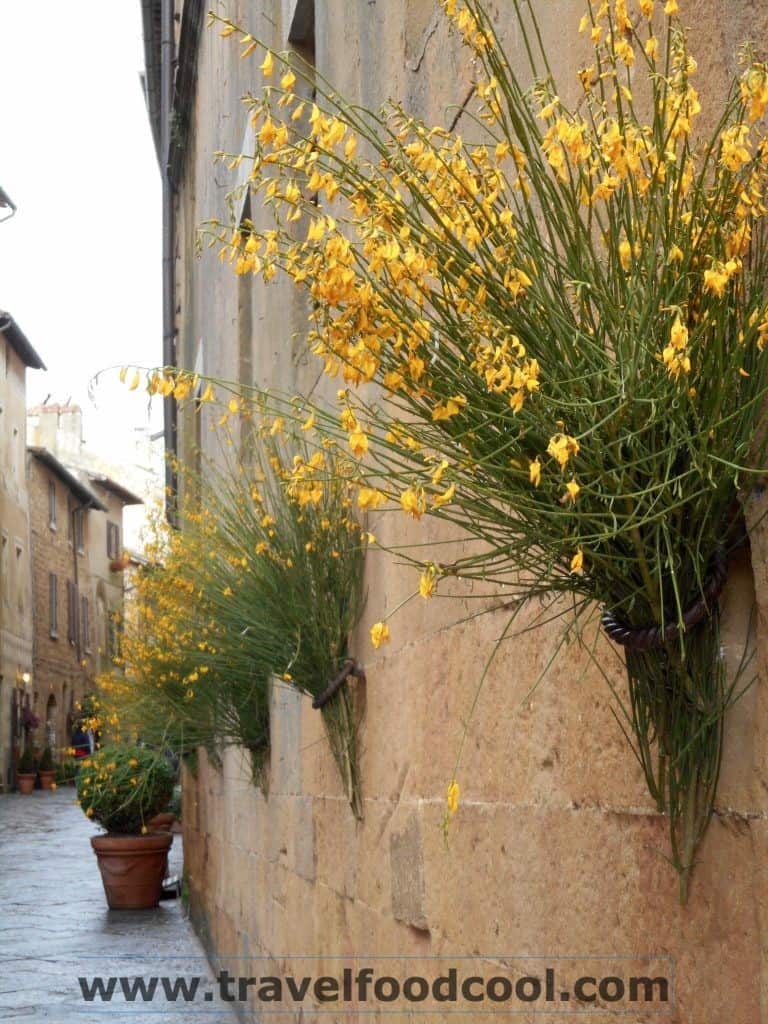
Starting its life as an Etruscan town originally named Corsignano, Pienza (renamed in 1462), is located in Tuscany on the road from Montepulciano to Montalcino. It is located smack dab in the middle of the famous wine towns of Montepulciano and Montalcino – about 15 minutes each way. Many people drive past this small town on their way to Brunello di Montalcino from Vino Nobile di Montepulciano (or vice versa). Pienza, unlike its famous neighbours, is quite flat, very walkable, and is worth a stop.

Not only is it home to picture-perfect vistas, corners, alleys, and shops, it is also recognized by UNESCO (1996) as a World Heritage Site. The UNESCO recognition is for both being an “ideal town” in its town-planning design and for the Humanist Renaissance buildings surrounding the central square.

Pienza was the first town to put into practice a town-planning concept. The new vision of urban space was realized in the trapezoidal-shaped main square with the Cathedral in front. A famous photo spot in the square is the Pozzo dei Cani (Dogs’ well, or as it is also known, Rossellino’s well). Pienza, or as it was known at the time, Corsignano, was the birthplace of famous humanist scholar and writer, Enea Silvio Piccolomini.



Piccolomini is better known by the name he used later in life, Pope Pio (Pius) II. The Pope’s palace, built on the site where Pope Pio II (1405 -1464) was actually born, sits to the right of the Cathedral. Once the home of a Pope (and his offspring and future generations!), Palazzo Piccolomini can be visited with a 30 minute guided tour (Tuesday to Sunday 10:00 – 16:30 October to March and 10:00 – 18:30 March to October) in various languages. The “Sala delle Armi” (arms room) is especially interesting, and the view from the internal garden is beautiful. For reservations, click here. (If you have been to Siena, you have probably marveled at the ceiling in Piccolomini’s Library in the Duomo.)

In an age of selfies complete with selfie sticks, Pienza offers photo ops galore with streets named “Via del Bacio” (kiss street), “Via dei Amore” (love street) and “Via della Fortuna” (lucky street). The terrace-like walkway behind the “main street” offers a gorgeous panoramic view of the Val D’Orcia with its rolling hills and green fields. If you are lucky enough to visit after a rain shower, you may be blessed with a full rainbow sighting and glowing green fields.




The streets are filled with antique stores, craft shops and wineries and with restaurants serving, and stores selling, the local typical Tuscan fare: meats and pecorino (sheep’s milk) cheese. Pecorino is a hard cheese made from sheep’s milk and is protected by the European Union with DOP (Denominazione di Origine Protetta – protected designation of origin) status. As Pecorino is a hard cheese, it can be brought back to Canada.

Film buffs will recognize the scenery (Capulet’s house and courtyard; Mercutio’s speech in honour of Queen Mab) from Zeffirelli’s “Romeo and Juliet”, which was filmed in Pienza.

Why did the town change its name from Corsignano to Pienza? The Pope, after the completion of his new town-planning concept, changed the name of the town to honour himself. It’s good to be Pope!




